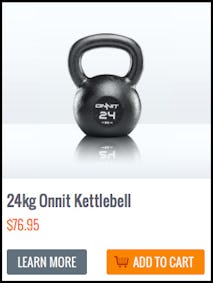 We all know athletes who can lift the entire weight room but can’t get out of their own way. We also know athletes who are lightning fast, yet a slight breeze can knock them over. But the athletes that everyone envy’s – the athletes that dominate – are the ones that possess that rare combination of strength and speed!
We all know athletes who can lift the entire weight room but can’t get out of their own way. We also know athletes who are lightning fast, yet a slight breeze can knock them over. But the athletes that everyone envy’s – the athletes that dominate – are the ones that possess that rare combination of strength and speed!
Those are the athletes that reach the pinnacle of their sport, and much of their success can be attributed to the fact that they have developed the most important physical characteristic in all of athletics… POWER! Would you like to become more powerful? If so, keep reading because I’m going to explain exactly how it’s done.
Power Point #1 – Develop (Real) Core Strength
Without a strong core, you will never reach your power potential. A strong core is truly the foundation of an explosive athlete. The four other techniques that are explained in this article are worthless if you don’t have a strong core. Here’s why:
The number one role of the core is to stabilize and protect the spine while the extremities move. Think of an Olympic sprinter running a 100 meter dash, their arms and legs move at superhuman speeds, while their core remains perfectly still. That example paints a great picture of the core’s “protective” role, as well as its role in absorbing and transferring forces through the body. That is the epitome of “real” core strength (and by the way, that type of strength isn’t developed by performing endless repetitions of crunches or similar abdominal exercises that are performed laying on your back).
The best way to develop “real” core strength is by learning how to breathe and brace properly, along with incorporating “anti- movement” patterns into your training. Plank variations, loaded carries, and movements that require you to resist spinal flexion, extension, or rotation are just a few examples of the types of exercises you should be performing to strengthen your core. These movements should become staples in your training in order to build the “power center” needed to absorb and transfer forces through your body.
Always remember this: You can have the strongest arms and legs in the world, but if you have a “marshmallow in the middle,” you will never be able to optimally display your power.
Power Point #2 – Incorporate Jumps & Plyometrics Into Your Training
Plyometrics and jump training are two of the most popular (and effective) ways to develop power. If you want to become more explosive, you must incorporate them into your programming. But it’s important to note that there is a difference between plyometrics and “jump training.” The terminology should not be interchangeable.
If the intensity of the movement is high enough and the transition on the ground (amortization phase) is fast enough (0.2 seconds or less), it’s a true plyometric. An example of a true plyometric would be reactive hurdle hops (setting up two or more hurdles a few feet apart and jumping over them as quickly as possible, while spending minimal time on the ground between each hurdle).
An example of “jump training” would be performing box jumps or a single vertical jump. The engaged musculature is rapidly stretched and contracted during both types of training, but as stated previously, plyometrics are generally more intense due to the forces produced during each ground contact.
Power Point #3 – Master The Olympic Lifts Or Incorporate The Dynamic-Effort Method
If performed properly, the olympic lifts are some of the most “powerful” ways to develop power. But what most people don’t realize is that any barbell exercise can be turned into a power movement, that is, if they are performed with sub- maximal weights and compensatory acceleration (“compensatory acceleration” is a term that Dr. Fred Hatfield coined when referring to “the intent to move the barbell as fast as possible, regardless of the weight on the bar”).
Generally speaking, loads of 50-75% of your 1RM should be used when training for power. The intent should always be to move the bar as fast as possible! With that being said; it is possible to go “too fast.” It’s important to note that it takes approximately 0.5 – 0.75 seconds to generate max tension. Knowing this, if you can stand up with 135 pounds in under 0.5 seconds when performing dynamic-effort barbell squats, the weight is too light to develop max tension.
To paint a clearer picture, let’s compare a whiffle ball to a baseball and shot put. Although the whiffle ball is the lightest, it is not the implement you can throw the furthest. Obviously, you’d be able to throw a baseball the furthest. This is because a baseball is the optimal weight to produce both force and velocity (the whiffle ball is too light to get max tension and the shot put is too heavy to get max velocity). Your dynamic-effort barbell training is no different; you want to find your “sweet spot” with regards to your training weight. This will enable you to get the most out of your dynamic-effort training. As mentioned earlier, this “sweet spot” generally falls in the 50-75% range for most people. When training for power, you also want to favor multiple sets of low reps to ensure optimal speed and quality of movement with each and every repetition.
NOTE: One of the problems with barbell training and power development is that we must decelerate the barbell at the end-range of the repetition. An advanced technique I’ve been using for years to reduce the amount of time spent decelerating is to attach bands or chains to the barbell. The reason these two implements are so effective is because they provide a “variable resistance” to the bar. Both implements are lighter in the bottom portion of a repetition (where our leverage isn’t optimal) and increase in tension and weight at the top of the repetition (where our leverage is more advantageous).
Simply put, as our leverage increases, the resistance on the barbell also increases (the bands stretch and increase in tension, whereas the chains unravel off the ground and add more weight to the bar during the course of the repetition). In order to complete the repetition, you have to push harder to account for the added resistance at the end range. This drastically reduces the amount of time you spend decelerating the bar because you have to push harder, for longer (this technique works great for bench pressing, squatting and deadlifting).
Power Point #4 – Go Ballistic!
“Ballistics” refer to exercises where you’re actually releasing or throwing an object. Medicine ball throws are a classic example of ballistic training. They are arguably the best (and most practical) way to improve upper body power. The reason they are so effective is because, unlike barbell training, there is absolutely NO deceleration when you release an object.
Whether you’re a boxer looking to improve punching power, a baseball pitcher looking to add a few miles an hour to your fastball, or a lacrosse player looking for a faster shot, I highly recommend incorporating ballistics into your programming.
Power Point #5 – Use “Contrast Training” To Peak For A Big Event
Contrast training (also known as “Transfer Training”) may be the single most effective way to develop power. It should be reserved for advanced trainees only. Contrast training refers to performing a strength movement followed by a jump, sprint, or throw. We are attempting to “excite” the Type IIB (fast twitch) fibers by performing a strength-based exercise and then transfer this heightened state into a “synchronized” activity.
An example would be performing a heavy 2-rep set of barbell squats followed by a vertical jump(s). Training in this manner produces a phenomenon known as “post activation potentiation” (PAP) by which muscular performance is enhanced as a result of previous contractions. This type of training is highly effective (if done correctly), but should only be performed during certain times of the year. For example, I personally incorporate contrast training during the final three weeks of training camp preparation with my college and NFL football players.
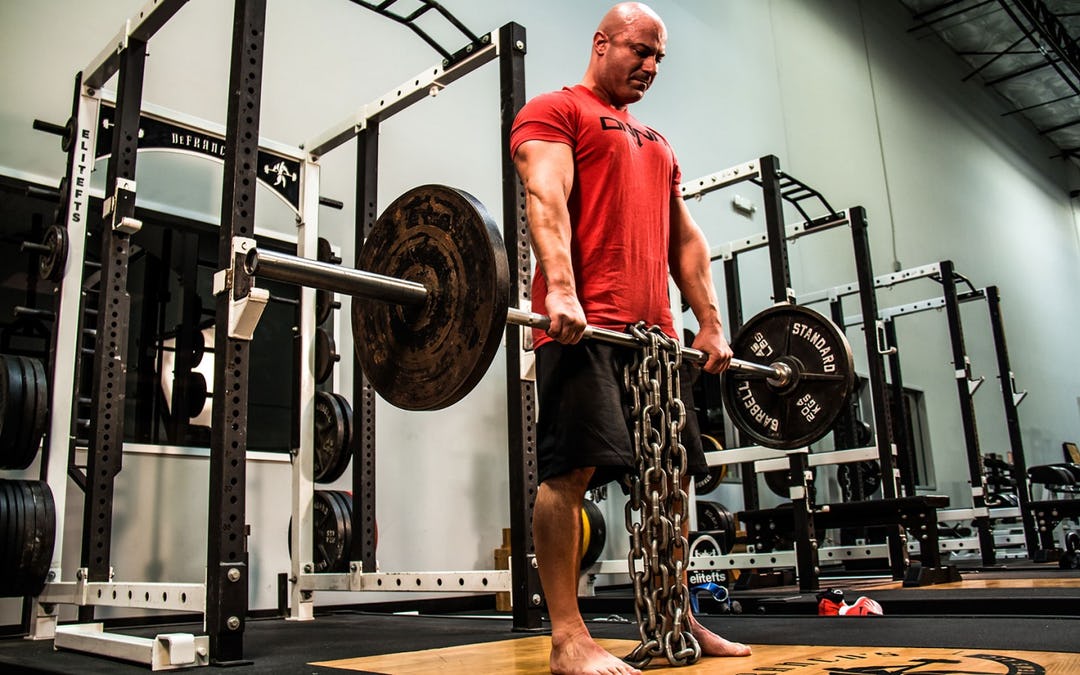
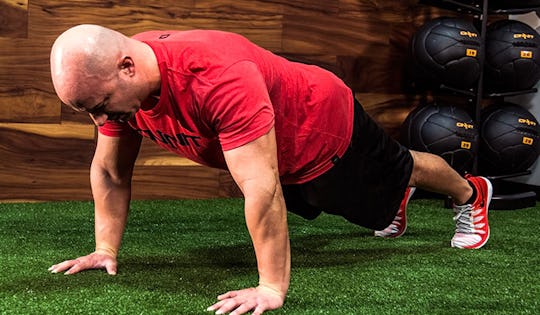
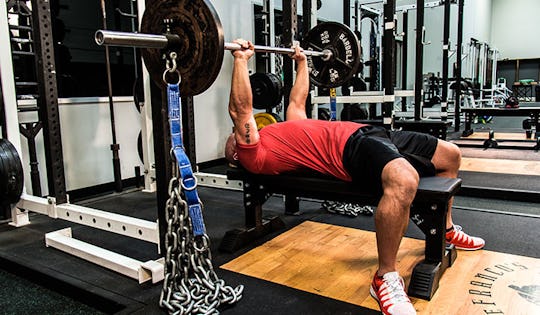
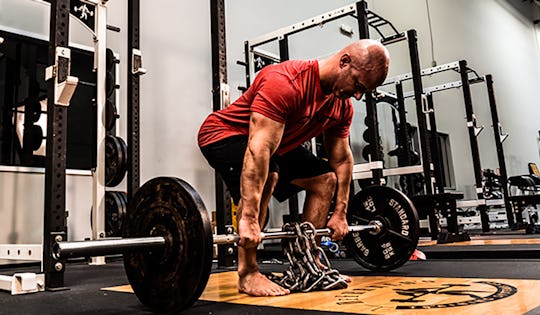
)





